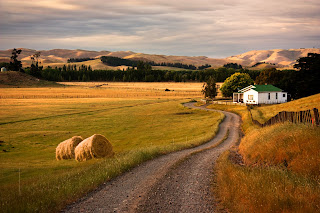In colonial times, just after the Louisiana Purchase and smaller land acquisitions, the United States was faced with a major problem as to how to develop and describe the new land so
settlers could easily know who owned this real estate. The government also wanted to encourage people to move West in order to homestead the newly acquired land. This in turn would make the territory permanently part of the United States. The Federal Government wanted to give land away to early pioneers daring enough to move, but this vast expanse of territory was lacking an adequate legal description in which this real estate could be conveyed from the government to individual landowners.
settlers could easily know who owned this real estate. The government also wanted to encourage people to move West in order to homestead the newly acquired land. This in turn would make the territory permanently part of the United States. The Federal Government wanted to give land away to early pioneers daring enough to move, but this vast expanse of territory was lacking an adequate legal description in which this real estate could be conveyed from the government to individual landowners.
Along came Thomas Jefferson and others with the idea of the Public Land Survey System or PLSS. This rather ingenious way of describing and surveying land was based on Meridians (Longitudinal lines) and Baselines (Latitudinal lines) lying within the United States. Just about every modern legal description we use in the western United States, except in Texas, comes from this method of breaking up land into Sections, Townships and Ranges.
A Section is one square mile or 640 acres. A Township is designated either North or South depending on its position to a baseline. Townships are six miles vertically. A Range is
designated either East or West depending on its relation to a meridian line. Ranges are six miles horizontally. A permanent monument or marker is usually placed at each corner of a
section to designate its exact location.
designated either East or West depending on its relation to a meridian line. Ranges are six miles horizontally. A permanent monument or marker is usually placed at each corner of a
section to designate its exact location.
In a given Township and Range there are 36 sections or 36 square miles which are contained in a six mile by six mile box. Sections can also be broken down into Quarter Sections known as Northeast, Northwest, Southwest and Southeast. All of these quarter sections are 160 acres, and can even be broken down further into quarter quarters of 40 acres and so on. For
example, here in Thurston County we use the Willamette Meridian and Baseline. A common designation would be the Northwest quarter of the Southwest quarter of Section 18, Township 17 North, Range 2 West of the Willamette Meridian. This division would be 40 acres of land.
example, here in Thurston County we use the Willamette Meridian and Baseline. A common designation would be the Northwest quarter of the Southwest quarter of Section 18, Township 17 North, Range 2 West of the Willamette Meridian. This division would be 40 acres of land.
History was forever changed when the United States and its early settlers moved West. With this new ability to describe land it became extremely easy to convey property from the
government to individual citizens. This in turn encouraged early pioneers to move, knowing full well that they could have their very own piece of the American land pie.
government to individual citizens. This in turn encouraged early pioneers to move, knowing full well that they could have their very own piece of the American land pie.
Author: Unknown. Many thanks to Kari E. Hayes of Thurston County Title Company, Olympia.

